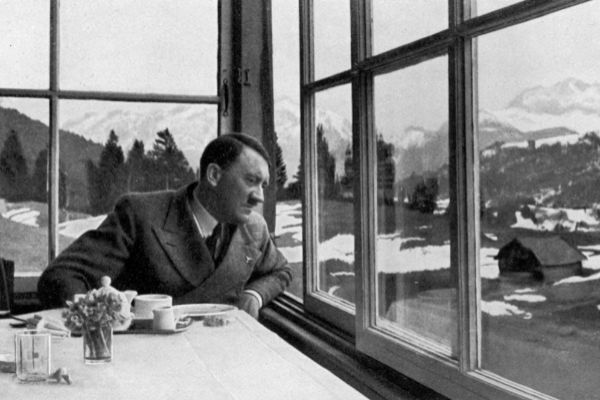- Multimedia special. 75 anniversary of the Normandy landing
- Leaders: Why Churchill is the role model in the era of populism and teenage politicians
In their obsession to destroy it all the Nazis ended up giving up even the coffee principles. If their acrostic indicates that it must be hot, bitter, strong and scarce, the Third Reich leaders opted for decaffeinated coffee as a national product whose consumption went beyond a health concern to preserve the purity of the Aryan race.
After the horrors of the Great War of 1914, certain naturist values became fashionable in the Weimar Republic, which included the intake of organic food, the renunciation of foods with stimulants such as sugar, drinking less alcohol, measuring with tobacco and Even embrace vegetarianism. Caffeine as a stimulant was frowned upon by those academic elites who advocated the arrival of new men and women. National Socialism, which was born and raised at that time, was impregnated with those values , according to the publication Atlas Obscura, dedicated to the restoration.
Many Nazi leaders, including Hitler himself, were vegetarians. Something similar happened with coffee. Coffee should be decaffeinated for a matter of nutritional ethics , but also for a patriotic reason: decaffeinated coffee is a German discovery. In 1905, in the city of Bremen, businessman Ludwig Roselius received a batch of freshly imported coffee beans that had been wet from seawater by accident. When he went to try them, he realized that they not only maintained the almost unchanging taste of coffee, but that they had lost their caffeine load in parallel.
He soon industrialized the process and commercialized the Sanka (acronym for Sans Kafeine ) as a line within his HAG coffee brand. It was all a success. Its tentacle in the US was acquired by the American company Kellogg in 1928. In France it burst the market. A well-known advertisement of the time sold coffee as "the best protector of the heart and nerves" and the image of a red-haired woman holding her HAG cup.
The problem is that, because they did not excite the Germans, the Nazis gradually poisoned them.
A few years earlier, in 1922, Ludwig Roselius had personally met Adolf Hitler, who made a pleasant impression on him. Roselius embraced the National Socialist creed but never ceased to be a seller, to the point that his decaf coffee sold him as a kosher food (suitable for the consumption of the Jews according to his own standards). In the Hitler Youth standards, caffeine was considered a poison to ban, so the German state began buying tons of HAG coffee not only to supply the Nazi elite's schools, but to serve in the large military stops of Nuremberg before 42,000 new recruits in 1936. The collaboration between coffeemaker Roselius and Hitler was sealed. The problem is that, because they did not excite the Germans, the Nazis gradually poisoned them. The use of benzene in the process that Roselius patented (which has nothing to do with the one used today) filled the body of German soldiers with small doses of that poison.
In addition, when the war began and the war effort required a continuous mobilization of the soldiers in the front, sometimes three or four days without sleep, the Germans could not resort to drinking coffee cups, because the one with the army it was Coffein-Freier , that is, decaffeinated . That is why the consumption of Scho-Ka-Kola was instituted, a circular chocolate tablet created at the Berlin Olympics in 1936 by Theodor Hildebrand high in caffeine, which ceased to be verboten (prohibited) to enter fully into the German landser diet that took Poland, Belgium, France or Greece at full speed.
The Scho-Ka-Kola was distributed first to the pilots of the night missions so that they did not fall asleep at the controls of the plane, and then it was passed to other estates of the army, such as the crews of tanks or submarines, in addition to the troops SS responsible for killing Jews in the invasion of the Soviet Union, which combined with huge amounts of alcohol to resist this criminal activity without asking too many questions.
In addition to caffeine chocolates, they drank huge amounts of alcohol
Allied troops used to take them away from the Germans who fell prisoners because they considered them a luxury. Four servings of this chocolate equals one can of current energy drink . The Scho-Ka-Kola is still sold, although the swastika of the version of Nazi Germany has disappeared from its characteristic can.
He was not the only stimulant who tried to counteract the null effects of coffee on the dream of the front troops. The documentary Secrets of Death: World War drugs , revealed that the German army distributed a methamphetamine called Pervitin, which was marketed as a "recreational stimulant" during the 1930s.
After the war, the system to decaffeinate coffee changed, dispensed with chemistry and benzene and became more natural. The multinational General Foods acquired the brand founded by Roselius in 1979 . Today this coffee is still for sale.
According to the criteria of The Trust Project
Know more
